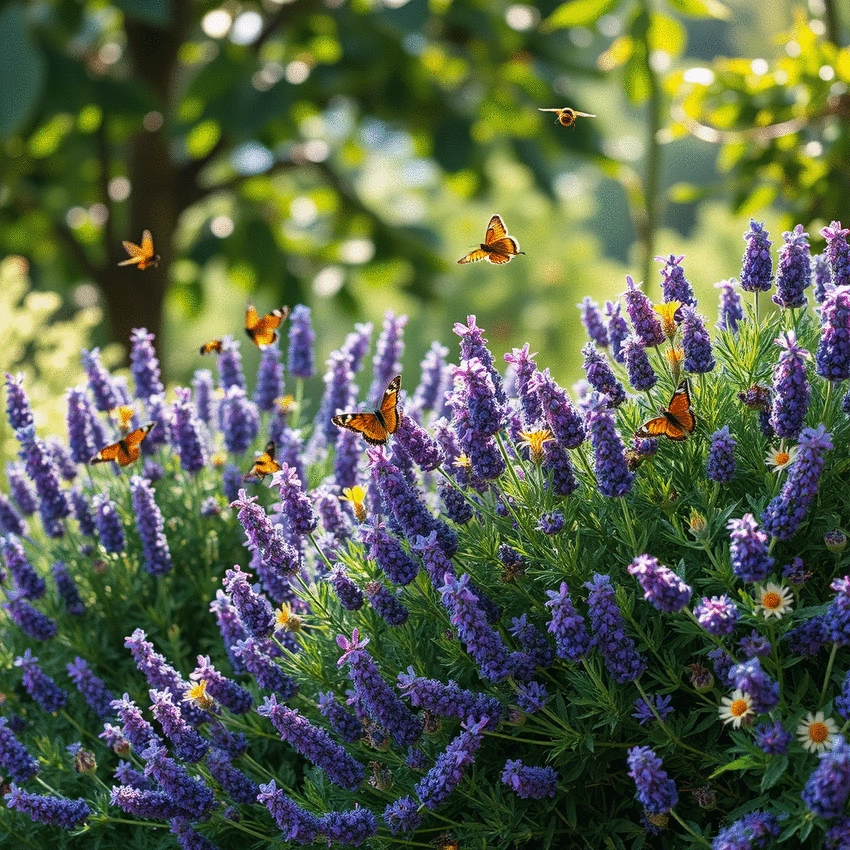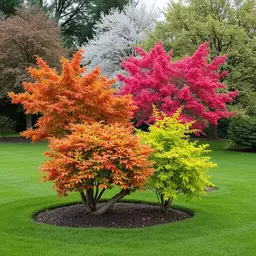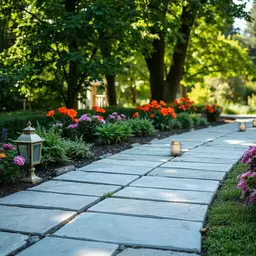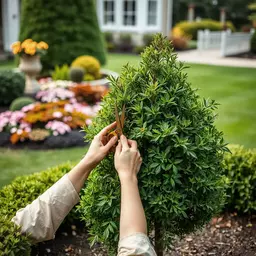Year-Round Trees for Your Landscape
By Celia Fairchild / Nov 02
Creating a garden that attracts butterflies and bees is more than just a pleasurable aesthetic; it plays a crucial role in preserving our ecosystem. The addition of elegant shrubs not only enhances beauty but also supports the vital work of pollinators. Are you ready to transform your outdoor space into a haven for these essential creatures?
Explore the essential advantages of incorporating pollinator-friendly shrubs into your garden:
Pollinator-friendly shrubs provide nectar and pollen, crucial for the survival of butterflies and bees.
These shrubs help sustain local ecosystems and promote a diverse range of wildlife.
Adding these shrubs enhances the visual appeal of your garden with their varied colors and shapes.
These plants can also draw a variety of other wildlife, enriching the garden experience.
Creating a beautiful garden that attracts butterflies and bees is not just about aesthetics; it’s about contributing to our ecosystem! Pollinators like bees and butterflies play a vital role by helping plants reproduce, which in turn supports biodiversity. By incorporating elegant shrubs into your garden, you can enhance both its beauty and its ecological value.
Imagine a garden filled with the vibrant colors of blooming shrubs, alive with the fluttering of butterflies and the gentle buzz of bees. These charming creatures are not only delightful to watch; they are essential for pollinating many of the plants we cherish in our gardens. At Ornamental Yard, we understand the importance of creating spaces that harmonize with nature, making our gardens a haven for these beneficial insects. For more insights on how to enhance your outdoor space, explore our guide on elegant landscaping with decorative trees.
Pollinator-friendly shrubs are essential for creating a thriving garden ecosystem. They provide nectar and pollen, which are crucial food sources for butterflies and bees. When we plant these shrubs, we help sustain local populations of these important creatures, facilitating a healthier environment.
Additionally, shrubs can enhance garden aesthetics with their variety of colors, shapes, and sizes. By strategically selecting the right shrubs, you can craft a visually stunning landscape while also promoting biodiversity. Here are some important reasons to consider pollinator-friendly shrubs:
Now that we understand the importance of pollinator-friendly shrubs, let’s explore some options! Selecting the right varieties can transform your garden into a vibrant oasis for butterflies and bees. Here are some types of elegant shrubs that are known for their beauty and ability to attract pollinators:
As you select shrubs for your garden, consider how their characteristics align with your design vision. By combining elegance with ecological benefits, you can create a stunning landscape that supports our buzzing friends while enhancing your outdoor space. For more ideas on selecting the perfect plants, check out our article on selecting ornamental shrubs for landscaping.
Did you know? Incorporating native plants into your garden can significantly increase its attractiveness to local pollinators. Native plants are well-adapted to your local environment and provide the specific resources that butterflies and bees need to thrive. Consider adding a few native flowering shrubs alongside the elegant varieties for a truly inviting space!
Are you ready to take the first steps toward creating your own elegant pollinator garden? Starting your journey is easier than you might think! With just a few simple actions, you can make a significant impact on the environment and support our buzzing friends. Here’s how to get started:
By taking these steps, you’ll be well on your way to crafting a stunning and supportive environment for butterflies and bees. Remember, even small gardens can make a big difference! For tips on maintaining a vibrant garden year-round, see our guide on essential tips for tree care.
One of the best parts of gardening is sharing your passion with others! I encourage you to document your journey as you create your elegant pollinator garden. Consider sharing your progress on social media or joining local gardening groups. Here are a few ideas to engage with the community:
By connecting with others, you can inspire more people to appreciate the beauty and necessity of pollinator-friendly gardens. Together, we can make a lasting impact!
At Ornamental Yard, we believe that incorporating elegant shrubs into our gardens is not just about aesthetics but also about supporting our ecosystem. When we plant shrubs that attract butterflies and bees, we contribute to a healthier environment. These plants help:
Creating a pollinator-friendly garden with elegant shrubs is an act of love for nature, and it’s something we can all partake in.
Let’s come together to support our pollinators! I invite you to commit to planting and nurturing shrubs that attract butterflies and bees. Not only will you beautify your outdoor space, but you’ll also play a crucial role in promoting environmental health. Start your journey today, and let’s grow a community that values and protects these essential creatures! For more ideas on how to enhance your outdoors with shrubs, check out our comprehensive guide.
As you embark on this gardening adventure, remember that every plant counts. Let’s nurture nature together, one elegant shrub at a time!
Here is a quick recap of the important points discussed in the article:
Here are some common questions about creating a pollinator-friendly garden:

 Year-Round Trees for Your Landscape
Have you ever considered how the right trees can transform your garden into a year-round masterpiece
Year-Round Trees for Your Landscape
Have you ever considered how the right trees can transform your garden into a year-round masterpiece
 Creative Walkway Design Ideas
What if your walkway could do more than just lead the way? With the right design, it can enhance you
Creative Walkway Design Ideas
What if your walkway could do more than just lead the way? With the right design, it can enhance you
 Pruning Tips for Ornamental Shrubs
In the world of gardening, pruning isn't just a routine task; it’s an art that can greatly influen
Pruning Tips for Ornamental Shrubs
In the world of gardening, pruning isn't just a routine task; it’s an art that can greatly influen